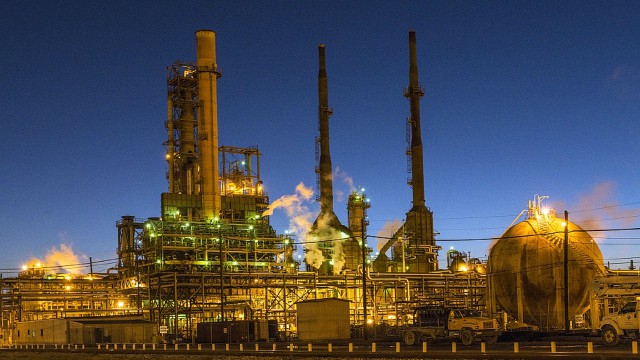After rallying strongly recently, oil appears caught yet again in another downward spiral, despite increasing optimism over its outlook. The North American benchmark West Texas Intermediate (WTI) has weakened by around 1% over the last month, sliding below the US$67-a-barrel mark for the first time since mid-June 2018 before recovering slightly. There are signs that crude will continue to experience considerable volatility over coming months and could mover lower once again regardless of growing supply constraints.
Now what?
Oil’s latest pullback was sparked by an unanticipated build in inventories, where U.S. oil stocks — for the week ending July 13, 2018, according to the U.S. Energy Information Administration (EIA) — rose by 5.8 million barrels compared to a week earlier. That was in stark contrast to analysts expecting an almost two-million-barrel draw from U.S. inventories for that period. This indicates that refinery utilization is not as high as forecast, and hence demand for crude could be waning.
A key fear is that the Trump administration’s trade policies will spark a full-scale trade war, which will constrain global economic growth, causing demand for energy to fall.
Then there is the impact of higher oil prices. The International Energy Agency (IEA) expects higher oil to trigger a decline in demand, and there is also the risk of demand peaking in coming years because of a falling reliance on fossil fuels.
There is growing evidence that supply constraints may not be as significant as initially thought. While Libya remains mired in civil war, which has triggered frequent production outages, it has been able to re-open affected ports and pipelines relatively quickly. Saudi Arabia has also shown itself willing to pick up any slack in OPEC supplies and, with an estimated two million barrels daily of spare capacity, is more than capable of doing so.
Meanwhile, the Trump administration appears to be softening its approach to Iran, demonstrating a willingness to offer waivers to certain countries, giving them the right to purchase Iranian crude.
While the U.S. rig count has declined after hitting a three-year high in early June 2018, there are signs that the infrastructure constraints, which are preventing shale oil from expanding as fast as initially predicted, are being overcome. This means the tempo of operations in the U.S. shale oil patch and notably the Permian Basin, which has become the focus of drilling activity, should pick up in coming months.
The Permian has considerable spare capacity, which has been estimated by analysts to be as much as one million barrels daily, ready to go into production.
It also has the largest volume of drilled but uncompleted (DUCs) wells of any U.S. basin, which, by the end of June 2018, had increased by 5% compared to month earlier. Drillers in the basin also claim that technological developments and improved well design are seeing wells pump up to 35% more crude than they had previously.
Those factors indicate that U.S. oil production is positioned to resume growing at a rapid clip.
So what?
While there is every indication that price will remain volatile, and that WTI could fail to reach US$80 a barrel, they will not decline significantly either. That means there are plenty of opportunities for investors seeking attractively valued oil stocks in the North American energy patch.
One that stands out is Baytex Energy Corp. (TSX:BTE)(NYSE:BTE). Not only does it own prime oil acreage in the Eagle Ford Shale and is free cash flow positive when WTI is greater than US$55 a barrel, but it is in the process of boosting its exposure to light crude by merging with Raging River Exploration Inc.
The deal will create a leading North American upstream oil producer, which is forecast to have 2019 production of around 100,000 barrels daily, which will be 85% weighted to oil and other liquids with an impressive operating netback of $30 per barrel when WTI is at US$65 a barrel. Those numbers indicate just how profitable the combined entity will be, especially with WTI trading at over US$65 per barrel.









